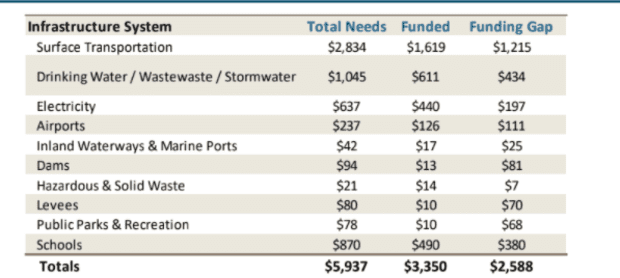This post was originally published on this site
Ignoring the problem usually only makes it worse.
Take Jackson, Miss., the state’s capital, where a city of mostly Black residents has been living through a water crisis since mid-February, when powerful winter storms pummeled much of the South and stressed Jackson’s aging water-treatment system.
COVID-19 laid bare America’s shortcomings, particularly as it left poor and rural communities in the lurch without fast-enough internet for virtual doctor’s appointments or distance learning, and the life-expectancy gap between Black and white people widened.
But if there is a silver lining to the pandemic, it may be that America finally fixes its overstretched roads, water supply and other critical infrastructure, said Joseph Quinlan, head of CIO market strategy at Merrill and Bank of America Private Bank.
“It’s geopolitics, it’s health care, it’s the status quo of our administration,” Quinlan told MarketWatch, while pointing to President Joe Biden’s vow to make rebuilding the nation’s infrastructure IGF, +0.73% a signature issue.
“There is a cost to doing nothing. It’s a rising cost,” Quinlan said, adding that broken infrastructure often creates a crisis that comes with a higher price tag to repair than upkeep. But he also sees lost career and educational opportunities as a result of insufficient broadband connections across the nation as an existing threat that could weigh down the U.S. economy over time.
Read: Why remote work, schooling in rural America need Biden’s infrastructure plan
U.S. infrastructure recently received a C-minus grade from an annual report card by the American Society of Civil Engineers, which isn’t great but is better than the past 20 years, when it persistently earned D grades.
Quinlan expects that to change with an coming “supercycle” of infrastructure spending under Biden and the Democratic-run House and Senate, which looks to help the U.S. regain its footing from the pandemic while combating climate change and racial inequity.
“It’s a convergence of forces that makes this decade a decade of building,” Quinlan said.
Fixing the problem will come with a hefty price tag, as yields on government debt TMUBMUSD10Y, 1.529% have been near one-year highs and as Biden looks to complete his $1.9 trillion pandemic aid package, which is focused on helping the hardest-hit households and businesses.
This chart outlines the estimated $2.6 trillion in infrastructure funding still needed to shore up the nation’s transportation, schools, drinking water and other vital systems over the next 10 years:

Infrastructure spending need (billions) from 2020-2029.
ASCE 2021 Infrastructure Report Card
Quinlan also views the U.S. as being in a “tech Cold War” with China, a battle he sees requiring not only the modernization of America’s ports for efficiency, but also bolstering quantum computing and deploying climate-mitigation strategies.
“We are in a race to set those standards and have the world follow,” he said.
Related: Biden warns China could ‘eat our lunch’ as he calls for improving U.S. roads, bridges

